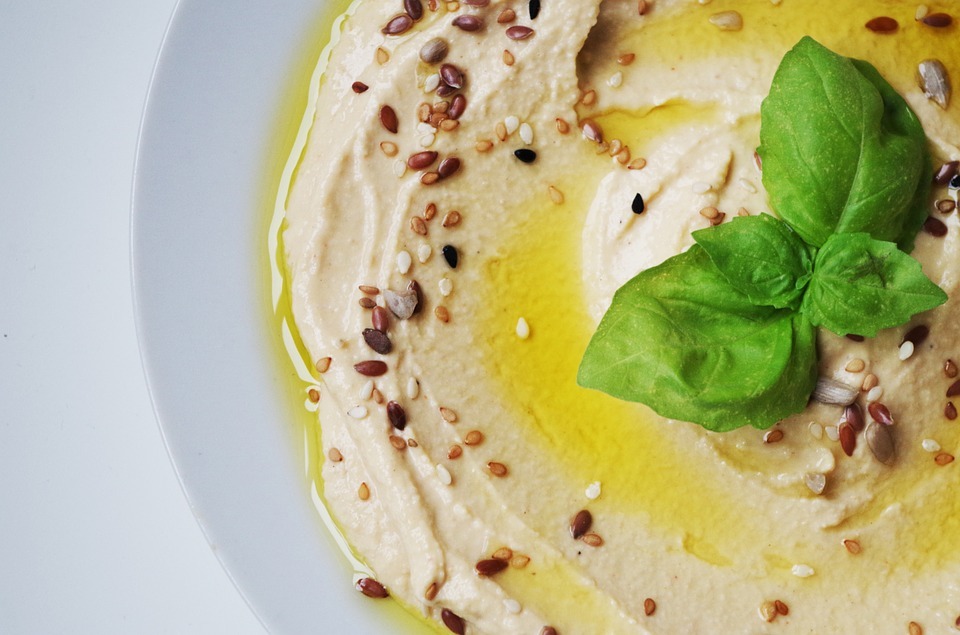Hummus is a popular sauce/dressing that originated from Arabia with Hummus meaning chickpeas. It is made with cooked chickpeas, olive oil, salt, lemon juice, and tahini sauce all blended together in a rich, creamy sauce. Hummus is a staple serving in the Middle East and Mediterranean cuisine; however, its health benefits have made it common in many houses as a common condiment.
Health Benefits
The main ingredient in hummus is chickpeas which contain a number of nutrients such as proteins, Vitamin B, Manganese, Dietary Fiber, and minerals. The most authentic recipe of hummus is low in fat with no sugar and very few calories; however, the recent innovations in the recipe contain artificial flavors and chemicals that are added to extend the shelf life.
Hummus also contains healthy fats such as polyunsaturated and monounsaturated fats that help maintain cholesterol levels, control blood sugar and prevent the body from heart diseases. The high quantity of fiber in Hummus is also helpful in controlling body weight and research suggests that regular intake of Hummus helps in achieving a low BMI. Research also says that hummus fans don’t fall obese and also tend to have controlled glucose/sugar levels.
How to make the best hummus dressing
Hummus is very easy and quick to make a sauce. There isn’t a definite recipe or ratio to it but the taste and texture of the dressing are very much dependent on the quality of chickpeas you are using and how well they are boiled. Below are some simple recipes that will give you home-made hummus anytime around.
Ingredients
- 3 1/2 cups soaked/cooked chickpeas. You may use the canned ones as well.
- 1 tbsp. baking soda (use while soaking and cooking the chickpeas)
- 1/3 cup tahini paste
- 8 roasted garlic cloves, or 1-3 fresh garlic cloves (use fresh garlic if you want a sharp taste)
- 1/4 cup fresh lemon juice
- 3/4 tsp cumin
- 1/2 tsp salt or to taste
- 1 tbsp extra virgin olive oil
- Pinch cayenne pepper
- Paprika and fresh minced parsley for garnish
Method:
- Soak and cook the chickpeas in water with some baking soda. Drain them once they are tenderly boiled and let them rest at room temperature. In case you are using canned beans, drain and rinse properly.
- If you want a very creamy hummus dressing, remove the skin of chickpeas. To do so, put cooked chickpeas in a skillet and add 1tbsp of baking soda to it. Mix well and keep on medium heat for a few minutes, constantly stirring the beans till the heat is thoroughly absorbed. As the beans are well-heated, you will see the skin separating. At this stage, transfer the beans into a bowl and add cold water into it, gently folding the beans with your hands in a way that the skin peels off. You can also use running water to do this.
- Now pour all the peeled chickpea beans into a blender or food processor and add tahini paste, lemon juice, garlic, salt, cumin, olive oil, and cayenne pepper. Blend nicely until the mixture is smooth and creamy.
- If you wish to add more salt or vinegar, make sure you blend the mixture again for consistent taste.
- If you want the hummus to be slightly liquidy, add lukewarm water and mix well.
Hummus is ideally served in a bowl or plate, with a tiny hollow well in the center for the garnish of parsley, olive oil, and paprika.
Servings
For hundreds of years, hummus is used in different forms around the world. The most traditional and favorite serving of hummus is inspired by Israel where it is served with herbs, olive oil, and pita bread. In Egypt, Hummus is seasoned with cumin and spices and served with pita bread. In Palestine and Jordan, hummus is used in all three meals. They also make a famous dish with hummus and yogurt known as Laban ma’ hummus which is served with toasted bread.
Today many restaurants use hummus as an appetizer, dip and serve it with crackers and tortilla, as a dressing for salads, and sauce for rolls, subs, and shawarma.
Hummus is healthy and delicious but too much of anything is not good for health and the same rule is applied for Hummus. One cup of hummus has approx. 408 calories, which is a great count for daily intake. Daily, a large quantity of hummus may also cause bloating, diarrhea and other stomach related problems. Therefore it is always suggested to consume carefully as a starter or appetizer to control its proportion.
You can also utilize this efficient and reliable EER calculator to under your estimated energy requirements; with EER you can come to know how much energy your body needs to perform your daily tasks efficiently.

